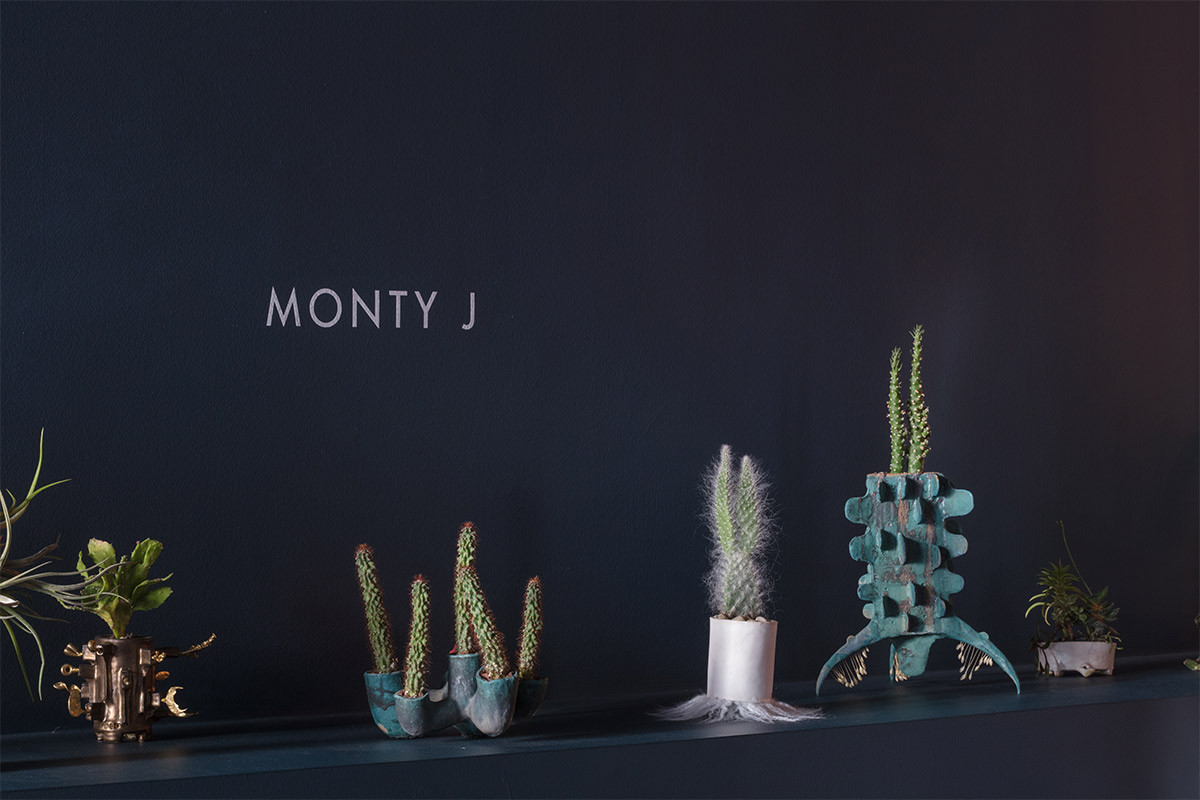
Interview with Monty J
New York based artist Monty J creates dreamlike sculptural vessels that invariably become the focal points of environments they’re placed in. From an amorphous alien-like vessel sprouting shocking pink tendrils to an elliptical saw-tooth creation, each of Monty’s highly personal works is a one-of-a-kind. Here, we discuss his process and inspirations.
Can you talk us through the creation of your pieces? Are they made entirely by hand?
I draw my concepts in order to keep the clay from controlling me. Clay is alive, it's an old soul, with its own well and way of being. The clay demands focus, and a lifetime of building a myriad of skills.
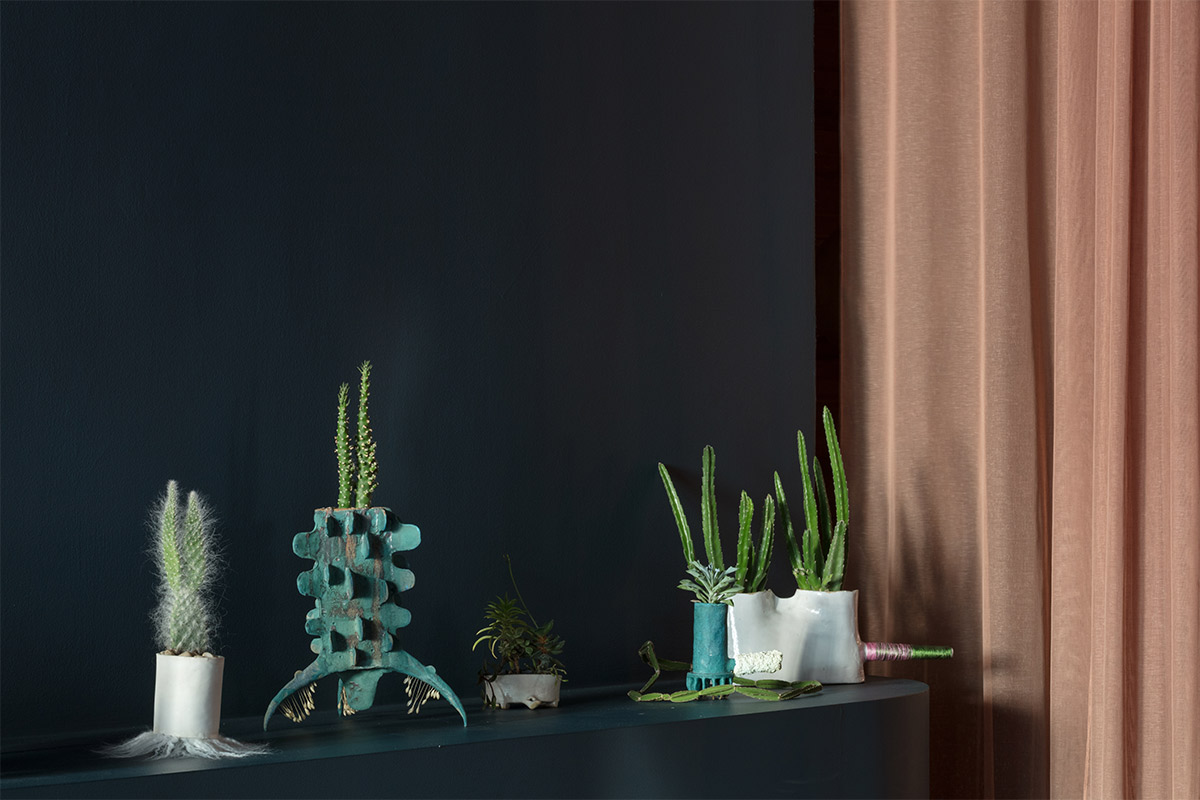
What is the ceramic process?
I use a technique known as hand building. Pinching, rolling, extruding and slab building. So all my work is 90% by hand the other 10% would be mixed media.
As an artist, when did you start devoting most of your studio practice to Clay?
I've always had ceramics and clay as my base of focus. I began focusing with the intention of making it a lifestyle around 2013.
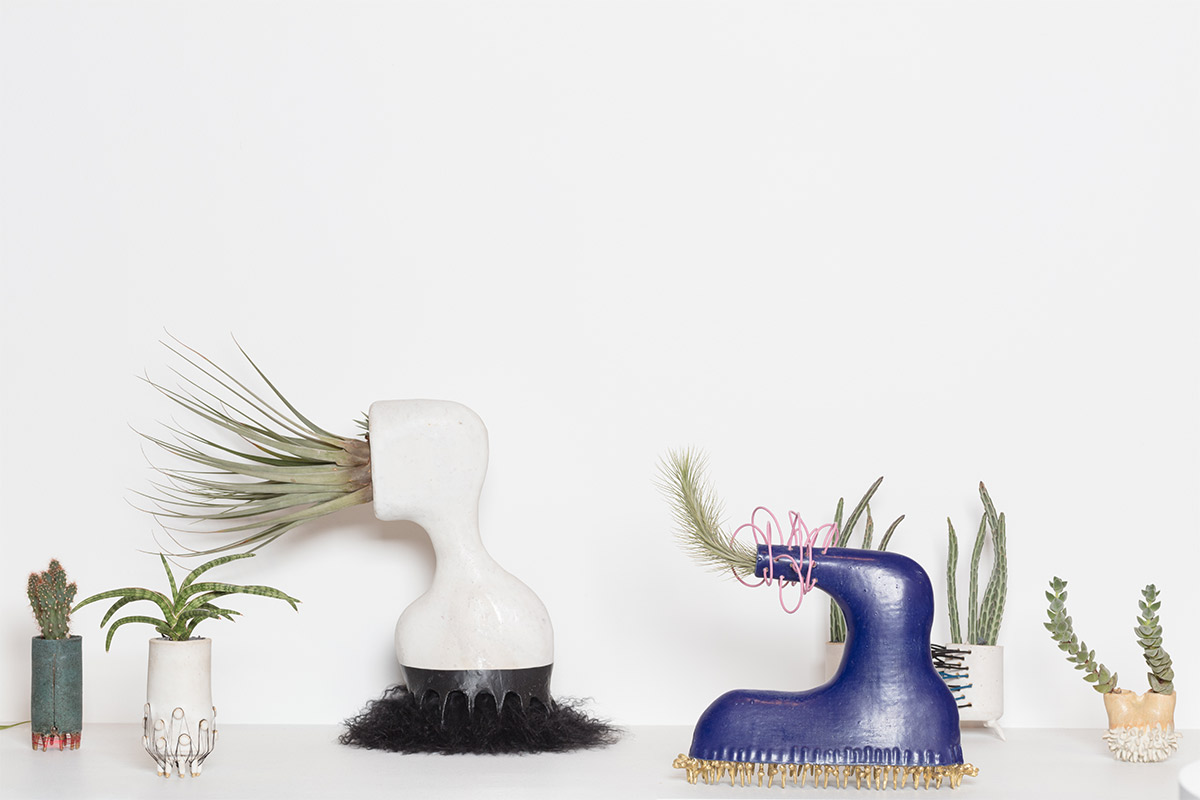
Your pieces seem pretty otherworldly and like living, animated creatures themselves. How did you achieve this effect?
Objects that are approaching near perfect balance are static. When an object struggles for balance it becomes alive. The more struggle the more life. All living things are precariously balanced between stagnation and animation it's my job to find the balance.
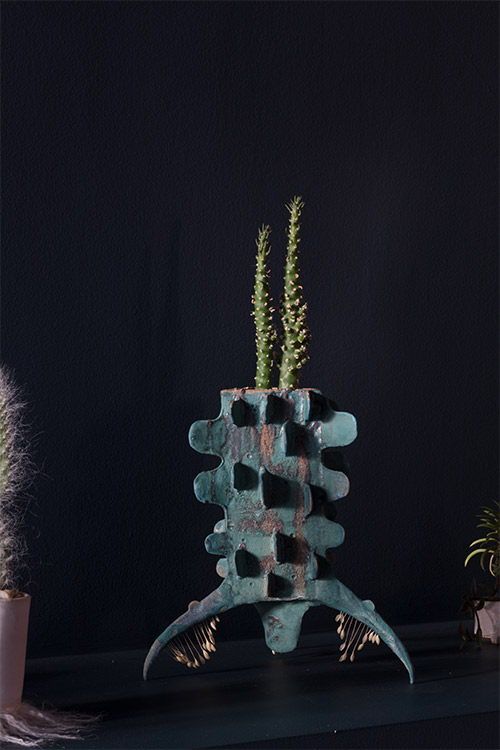
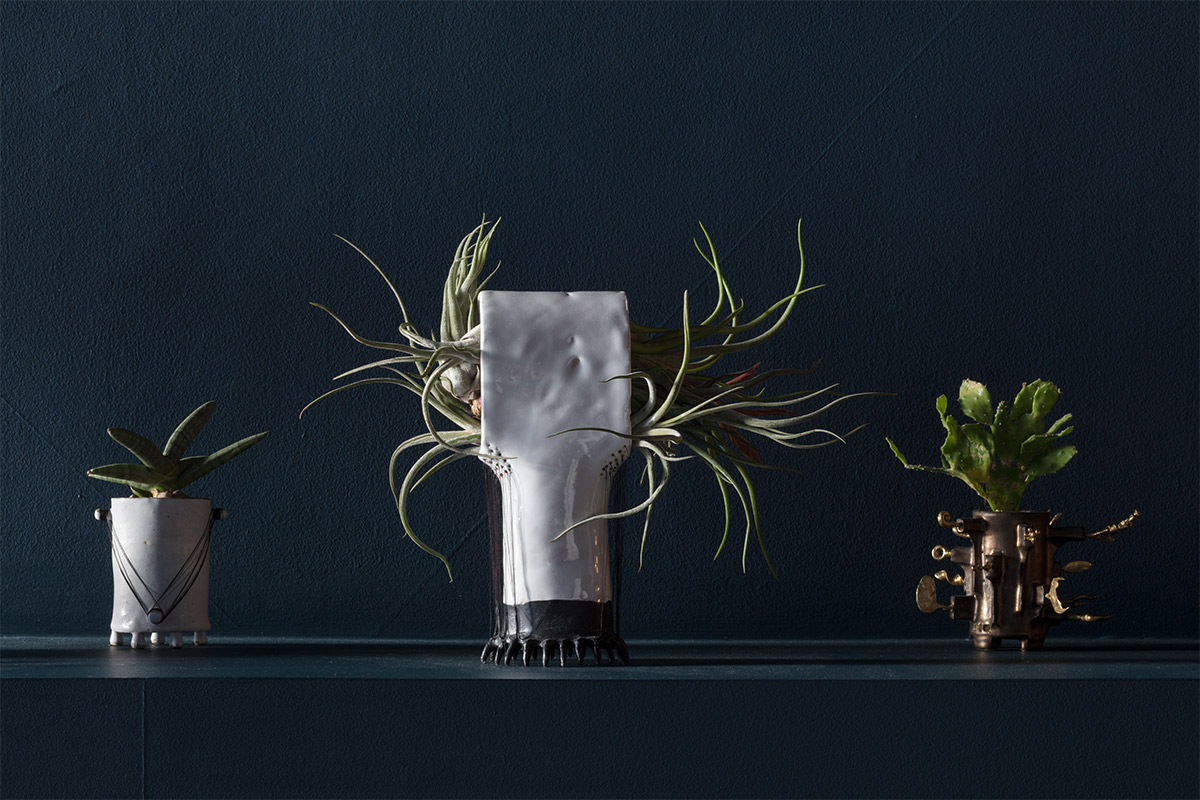
Can you explain your process for naming the pieces. You say it’s an ironic in-joke in that run of the mill names belie their complexity and uniqueness?
A name attempts to define us but we are so much more.
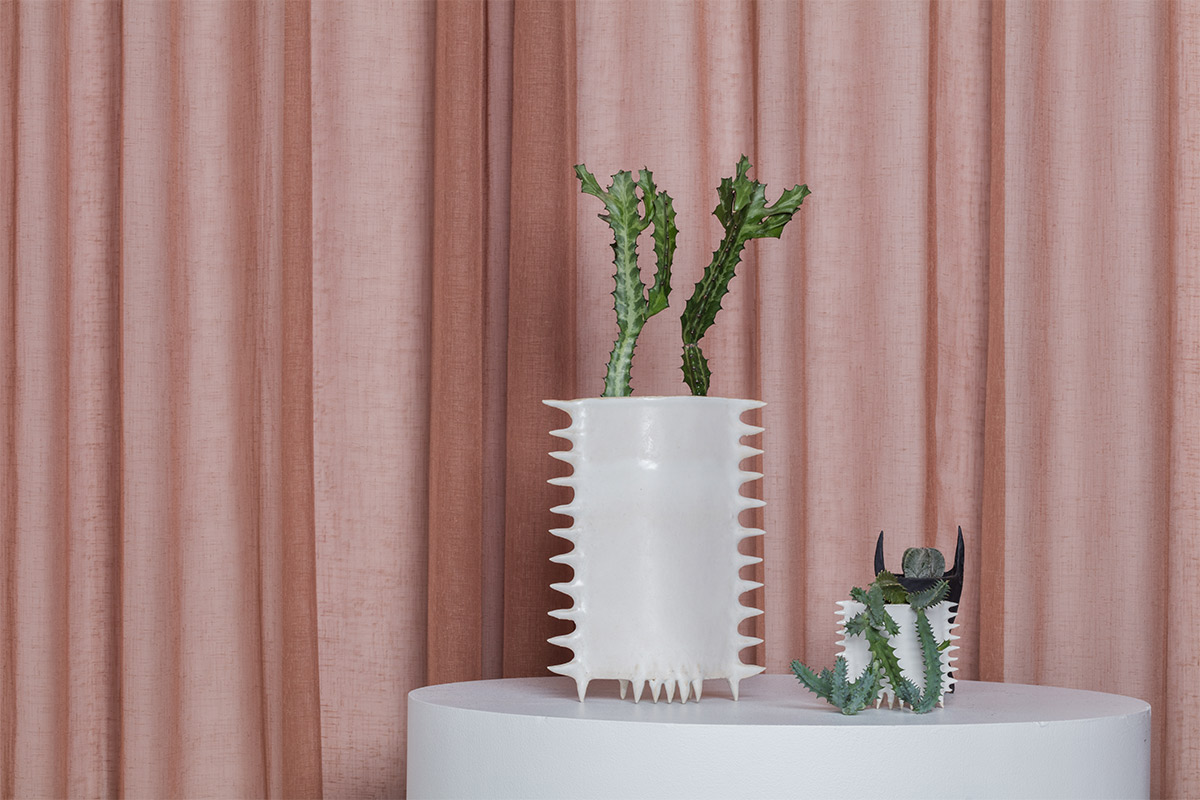
What are some of the things that inspire your work?
My work is inspired by discovery, curiosity, bringing people together. I'm also inspired by the hope that we will see nature as an ally and not an adversary. I want people to connect with each other and nature. Through my art I attempt to connect and inspire people. My hope is when people see my Peculiar eccentric works they can fine commonalities with each other as they view something oddly different from themselves. Those are my inspirations.

You said that you want the objects to be appreciated for their function (blend of organic and inorganic). How important is function to your process?
I like functionality because it involves us, and pushes us to think what would I use this for, or should I use this, Can I use this. Either way it's still art.

Photography by Lauren Coleman.
 The Future Perfect
The Future Perfect